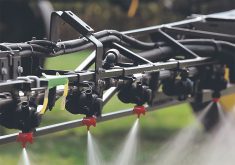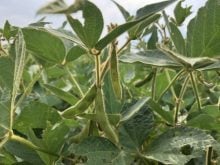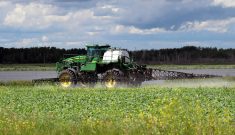REGINA — Canadian farmers risk falling further behind competitors if two main federal agencies don’t become more efficient and responsive to what the industry needs, said witnesses appearing before the House of Commons agriculture committee.
Industry representatives said Canada lags in many areas. Approvals and decisions take too long and rely on old processes, such as paper phytosanitary certificates.
The committee is studying red tape reduction and regulatory modernization at the Canadian Food Inspection Agency and Pest Management Regulatory Agency. The government implemented regulatory reform at both agencies, which fall under the health department, and they issued updates in September.
Read Also

Huge Black Sea flax crop to provide stiff competition
Russia and Kazakhstan harvested huge flax crops and will be providing stiff competition in China and the EU.
However, agricultural organizations want more progress to ensure the industry is competitive and sustainable.
Canadian Federation of Agriculture second vice-president Stephanie Levasseur said it wants the cabinet directive on regulation amended to mandate that economic and competitive interests of producers be considered.
“Decisions are made without sufficient consideration of food security in Canada, nor the price of food, and even less of the economic impacts of, or competitiveness of, Canadian agriculture, and this needs to change,” she told the committee earlier this month.
She and others said timelines have to be shorter for many regulatory processes.
“Re-evaluations should not take a decade,” she said.
“Evaluating drone usage, for example, for some crops, should not take over half a decade.”
Canada is behind other countries in accessing pest control products, feed additives and emerging technologies, and CFA recommends better alignment and collaboration with trusted partners.
However, stakeholders also said trusting research from other countries doesn’t mean the agencies should automatically rubber stamp new technology or have lower standards.
They said it’s important to consult and make quick decisions.
Brian Innes, executive director of Soy Canada, said the regulation isn’t always the problem but how it’s executed.
The National Cattle Feeders Association offered three recommendations, including timely approval of innovations, a rebuilt temporary foreign worker program and a modernized border process.
Livestock moving across the Canada-U.S. border are inspected at origin and destination, and inspection at the border could be more efficient if the systems are accepted as equivalent, said NCFA vice-president Cathy Jo Noble.
Pulse Canada said it has been asking for reform of outdated protein labeling requirements for years, yet the September update doesn’t mention it. Canada and the United States are the only two countries that require protein quality testing before food can claim protein content, said Greg Northey, vice-president of corporate affairs.
“As a result, staple pulse products like beans, lentils, peas, foods that Canada’s own food guide calls protein rich, cannot say so on their labels. We’ve recommended adopting internationally accepted approaches and ultimately moving towards a simpler quantity-based approach used in the EU and Australia.”
Northey said the lack of action on this file is “emblematic of a broader pattern.”
Both Northey and Innes called for the adoption of electronic phytosanitary certificates.
“Canada is an international laggard in electronic documentation, significantly behind our U.S. competitors who can use these electronic phytosanitary certificates for more than 100 countries,” said Innes.
He said soybean exports to Japan require almost 3,000 paper certificates, which create extra burden and cost of about $1 million per year just to one country.
“It’s embarrassing to have our customers repeatedly ask why we can’t do this,” Innes said.
Northey said Pulse Canada has been asking for the same for more than 10 years. He said CFIA began exploring this in 2018, or perhaps earlier, yet is only at the point of a potential project with Mexico this fall.
He said there is a similar pattern at PMRA, where longstanding issues are acknowledged but no progress takes place.
Northey added that joint reviews with international partners are important, but PMRA has been talking about that since 2008 and timelines now stretch to 2027 and beyond.
The system remains reactive rather than proactive and reflects “excessive risk aversion that too often prioritizes avoiding mistakes over seizing opportunities,” he said.
Seeds Canada offered a similar assessment.
President Brent Collins said the current system doesn’t reflect rapid innovation and global competition and is outdated, overly complex and full of red tape.
He said the burden must be reduced and risk management balanced with cost and speed to market, particularly in the current uncertain trade environment.
Collins said he was disappointed with CFIA’s progress so far and concerned about the delay in expanding first-party seed crop inspection and the proposal to move to alternative service delivery with a single service provider.
“Their proposed actions are unlikely to meaningfully improve farmers’ access to innovation,” he said.


















